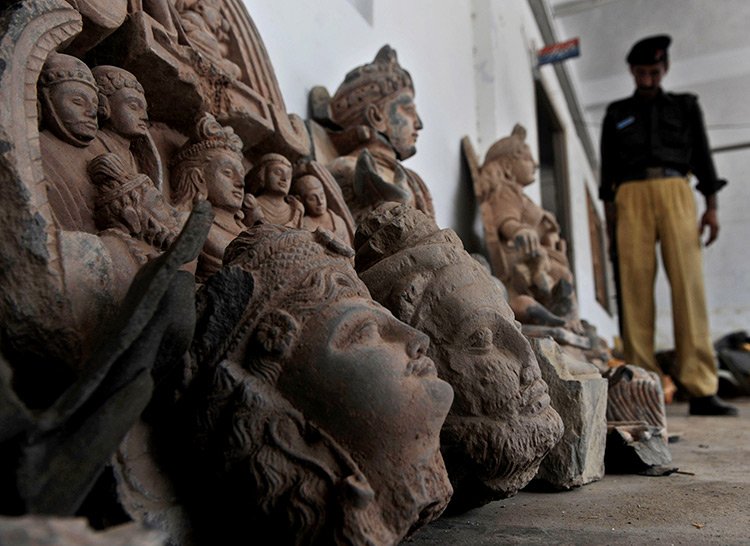Legislative Prevention of the Illicit Antiquities Trade
Photo from History Today
At both a scholastic and federal level, the question of correct procedure in the antiquities trade remains largely unanswered. The legislation used to regulate this trade remains anchored in the past while the trade evolves each year to match the increased demand of antiquities. The antiquities trade is uniquely suited to act as a cover for illicit activities like money laundering, terrorism financing, and organized crime. The trade allows for the anonymity of actors and the lack of clear governmental oversight should force legislators to reconsider and even rewrite existing legislation on both a domestic and international scale.
One of the primary international mechanisms for regulating the antiquities trade sources in the UNESCO 1954 Convention for the Protection of Cultural Property in the Event of Armed Conflict, adopted in response to the widespread destruction of invaluable cultural material during World War II. [1] Its primary objective is to protect cultural property during armed conflict given that conflict often gives rise to the opportunity for parties to steal, sell, or irreversibly damage antiquities. It explicitly forbids states party to the multilateral treaty from intentionally targeting cultural antiquities and sites as a means of inflicting harm on another state. Though the Convention was a step in the right direction in trying to control one aspect of preserving antiquities, not all nations have adopted the resolution, and many who have struggle with its enforcement. The inconsistency of enforcement provides a loophole which permits criminal activity to continue to occur without consequence both within states and across state borders. It also makes the prosecution of criminals highly difficult.
States are also attempting to control the antiquities trade at a more regional level, as the 2019 adoption of the Regulation on the Import of Cultural Goods by the European Union exemplifies. The Regulation set out to provide more oversight into the antiquities trade via demanding documentation for cultural goods imported into the EU—how they were obtained and where they are from—and a verification of the authenticity of said goods. [2] The Regulation also outlines punishments for any violation of its clauses, all in an effort to stop illicit activity. Regional legislation is, however well-intended, also highly limited in the scope of its impact on the overall illicit trade for several reasons.
First, such legislation is incredibly difficult to enforce because the illicit exchange of goods oftentimes occurs behind closed doors. In states without proper resources, the cost of finding and prosecuting illegal actors allows most criminals to act with relative impunity. This issue is exacerbated by the fact that most of the exchanged goods never go through customs, but rather are exchanged at auctions or in private markets. [3] In many cases, even legitimate actors may find themselves a part of the illicit trade by purchasing goods that came with forged documentation.
The issue of importation and exportation also provides opportunity for criminal behavior. Some states have laws permitting the ownership of cultural goods, but not allowing for their exportation in an attempt to preserve heritage within its original locale. [4] In such cases, an individual may be able to prove that an item was legally purchased, but selling it to another in a different country would constitute illicit trade. The lack of recognition of the rights of source countries to goods which are distinctly connected to their unique cultural heritage—the exportation of goods to universities or museums across the globe—raises questions about the legality of owning antiquities which have belonged to another state historically. In most cases, antiquities sold are sold without the consent of the source country. Proof of historical ownership can be complicated, and if objects are stolen directly from archaeological sites, nearly impossible to enforce.
In light of these issues, it appears that legislative attention should target the prevention of the illicit antiquities trade by attacking the black market auctions and arresting the primary criminal actors who may instigate the trade. In doing so, there is hope that the rate at which important pieces of cultural heritage are disappearing or being destroyed may slow and history be preserved.
Grace Posorske is a junior at Brown University concentrating in International & Public Affairs and Classics. She is a staff writer for the BULR Blog and can be contacted at grace_posorske@brown.edu.
